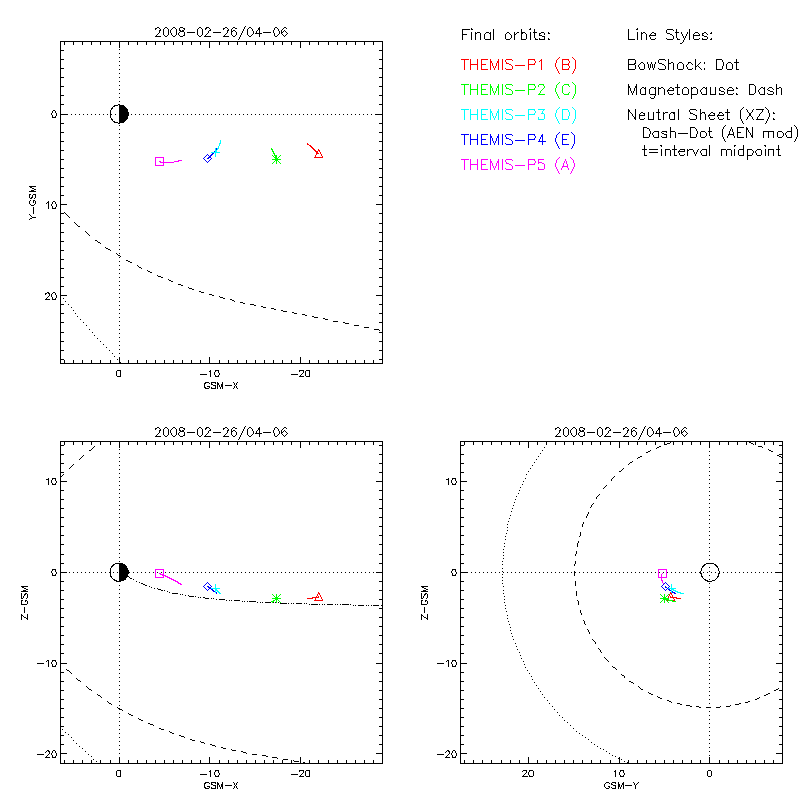Code
import pyspedas
from pytplot import tplot, get_data, store_data, options
from pipe import selectObtain FGM data from THM (Level 1) or MMS (L2) or from ground based magnetometers (gmags) and plot it using SPEDAS (cmd line or gui, IDL or python).
If you are unsure which date to pick you can use:
- For THEMIS data: 2008-02-26/04-06 UT (P3-5 or D,E,A) [see plots here]
- For ground-based magnetometer data: same as above (e.g., stations Gillam, or Carson City, NV) [plots here]
- For MMS data: 2015-10-16/08-14 UT (MMS1-4) [see plot here]
Process your data: compute the total field from its components and plot it in the same panel as the three components using colors b/g/r/black for x/y/z/t.
We define a utility function to compute the total field from its components, see below
def _tvectot(tvar: str, new_name: str, join_component: bool):
data = get_data(tvar, xarray=True)
new_data = linalg.norm(data, dims="v_dim")
store_data(new_name, new_data, xarray=True)
if join_vec:
join_vec(split_vec(tvar)+[new_name], new_name)
options(new_name, 'legend_names', ['x', 'y', 'z', 'Magnitude'])
else:
options(new_name, 'legend_names', 'Magnitude')
return new_name
def tvectot(tvars: str | list[str], newnames: str | list[str] = None, suffix="_mag", join_component=False) -> str | list[str]:
"""
Computes the magnitude of a vector time series.
Parameters
----------
- tvars : Names of the tplot variables.
- new_names: Names for the resultant magnitude tplot variables. If not provided, it appends the suffix to `tvars`.
- suffix: The suffix to append to tensor_names to form new_names if new_names is not provided.
- join_component: If True, the magnitude tplot variable is joined with the component tplot variables.
Returns
-------
Names of the magnitude tplot variables.
"""
tvars_type = type(tvars)
if tvars_type == str:
tvars = [tvars]
if join_vec:
suffix = "_tot"
if newnames is None:
newnames = [tvar + suffix for tvar in tvars]
for tvar, newname in zip(tvars, newnames):
_tvectot(tvar, newname, join_component)
if tvars_type == str:
return newnames[0]
else:
return newnamesShow the locations of the spacecraft or the ground-based station you used above in relevant geophysical coordinates (GSE, GSM, MAG, …) from a webbased tool (tipsod or other) or plot it in SPEDAS (you can find cribs for that).
THEMIS website provides good summary plot of the spacecraft locations in various coordinate systems, see here
It is also possible to use SSC Locator Graphics, which is also more general.

